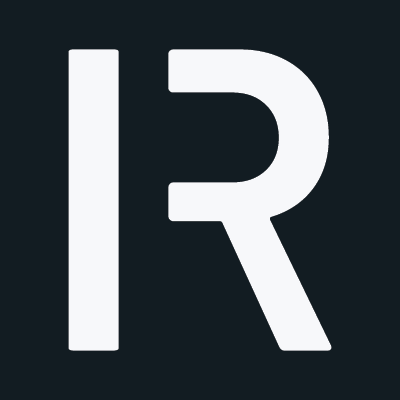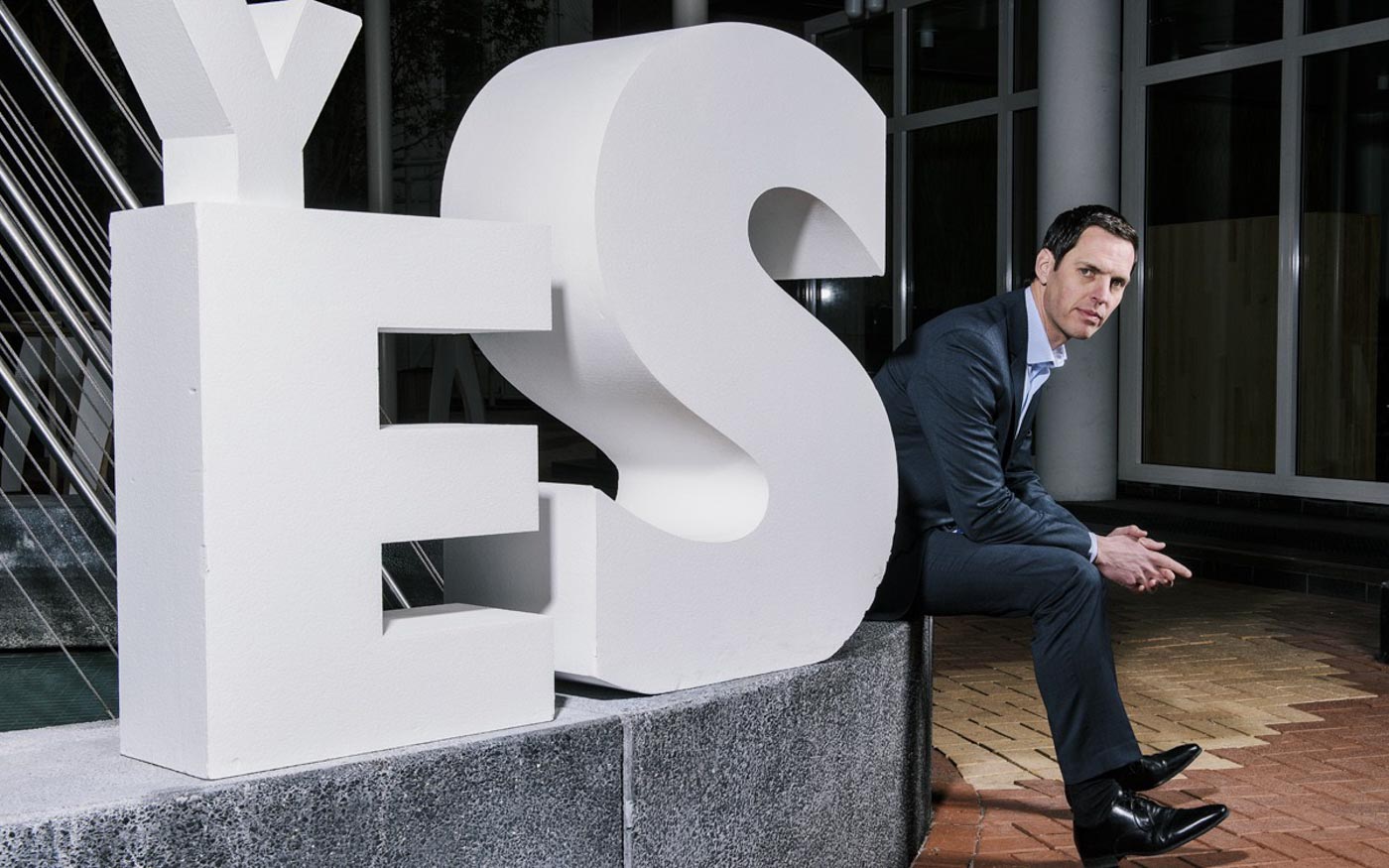In cooperation with Holland Fintech, Accenture, Fincog and Infinium we created a new report on the Dutch banking innovation ecosystem. Based on Ross Republic’s project work with several international banks, we provided an outsiders’ view on how Dutch banks are preparing their organisations for the future.
NIBCs pragmatic innovation push focuses on horizon one and two and on cooperation with fintechs
As part of our research process, we interviewed some of the leading Dutch banks in order to get direct insights about their innovation activities. We particularly looked at three dimensions: organisational structures and processes, product portfolio and value proposition. This spin-off article covers our interview with NIBC, who is very active in the European fintech scene through partnerships with e.g. OakNorth and Finleap. Hence, we sat down with Duncan de Vries (VP of Innovation, NIBC innovation lab) to discuss how he sets up NIBC for future success.
Have a look at the full Holland Fintech report here.
About NIBC
From its offices in The Hague, Amsterdam, Frankfurt, London and Brussels, NIBC serves around 600 mid-market businesses and more than 400,000 retail clients through a portfolio of client-focused products and services.
Creating innovation capabilities from scratch
Dealing with innovation is next to regulation and compliance a key topic for banks right now. Especially in Europe many banks face a tough business environment due to a long-term low interest rate environment, new regulations (e.g. PSD2/GDPR) coupled with heavy fines and costs, technological disruptions from fintechs and big tech companies and changing customer expectations, just to name a few of the current challenges. It’s a very interesting time for banking innovation, however every bank is unique and innovation can have very different meanings. Hence, how does NIBC approach innovation and what does the role of VP Innovation actually involve?
Innovation efforts at NIBC were structured in the NIBC Innovation Lab about three-and-a-half years ago. The main objective was to increase awareness about new possibilities and technologies in banking: “Some of the questions when we started were: Do we create a small group of people to innovate? Do we want to do it alone? What do we actually want to achieve? We concluded that everyone should have an open-mind, hence to start with a cultural impact. This could be achieved via different ways”, says Duncan.
Fast way forward, Duncan took over the role of VP Innovation, steering the innovation activities at the Dutch lender: “We facilitate, pilot projects and inspire people working at NIBC to become even more innovative. That’s in a nutshell what we try to achieve with the NIBC innovation lab”. Nudging the internal culture towards embracing innovation is not an easy task, as banks inherently have a risk-averse mind-set. So, in order to kickstart this cultural change, he started from the outside in through inspiration sessions, meetings with interesting external companies, as well as experiments and pilots, which all have made a really positive impact on the culture of the bank, according to Duncan. He further clarifies: “From that perspective the idea was not to set up a separate unit for innovation, so that we could drive the change from within. As many employees as possible should be involved in some way or another”.
Concerning his personal tasks, he outlines that his biggest goal is to facilitate: “In the organisation everyone works directly on the business, e.g. advising clients or doing administrative tasks, so what you don’t want is that someone has an idea and then needs to read all required information about compliancy and IT first. I try to get these things out of the way as much as possible, so that they can start working on the ideas and get to do experiments and pilots instead of on the ‘paperwork’”.
We are a smaller party that can fully benefit from fast decision making and being attractive for third parties even though we face at least equal challenges compared to the bigger banks.
He goes on to explain that not only providing the innovation facilitation, but also the inspiration about what’s possible today in the first place is one of his key goals: ”The people within the core business have deep expert knowledge. What is logically less on top of their agenda is the awareness about emerging opportunities to make their work easier. So, there’s a disconnect about what’s possible and what they think is possible. What we try to achieve with the inspiration sessions and workshops is that we make opportunities and technologies visible and enable to connect with other parties”.
Even though NIBC is a relatively small player in the banking ecosystem with less than 700 people, the bank has to deal with the same challenges as the larger ones. Duncan sees flexibility and a mentality that everyone thinks in terms of opportunities as key competitive advantages for such smaller players:
“Seeing what is the potential now and in the coming years, there are so many opportunities for the bank. We are a smaller party that can fully benefit from fast decision making and being attractive for third parties even though we face at least equal challenges compared to the bigger banks. We are always looking at opportunities to solve these challenges by cooperating with third parties, including fintechs”.
Seizing market opportunities: be a fast-follower by joining forces with external parties
Banks are usually very product-centric and not exactly known for innovation. Thus, if banks now want to prepare for the future, they need to start from within: changing the organisation towards customer-centricity, agility, and utilising new technologies. Therefore, we further discussed about how NIBC developed its innovation process and strategy.
First of all, Duncan outlined that NIBC approaches innovation a bit different compared to most other banks. The starting point for an innovation project at NIBC is a challenge that directly affects the core business. This means that either an employee has a new idea or an external (e.g. fintech) company approaches them, which the business and Duncan then assesses in terms of relevancy for their current core business challenges.
“I would say 80% of our innovation activities are in direct connection with the core business of the bank. There needs to be a business case and at least learn something from the opportunity. The fact is that you learn the most by doing. The other 20% is about experimenting to know what is possible in the future. For example, the bank did a pilot with blockchain technology last year even though we’re not heavily investing or experimenting with that technology. We’re rather watching closely what happens in the market and try to be a fast-follower”.
The key advantage: a small innovation team with strong connections to the core business
As Duncan has been working at NIBC for 15 years, he knows the organisation inside out and has his finger on the pulse of the bank. When asked about the strengths of their innovation setup, he stressed speed and the ability to filter out important market opportunities:
“One of our strengths is that we can start pilots or experiments relatively fast within NIBC. We learned over the last 3 years how to implement fast launches, to develop sandbox environments or how to create a fast track for new projects, which helps a lot. We also have quite short communication lines, helped by the size of the bank. Second, the selection of the right ideas is always a challenge, but we’re quite good at having a more selective and focused approach to decide in which direction to move in the first place”.
Due to the strong internal network, everyone at NIBC is empowered to implement new ideas: “It’s not like you step into a lab and say: ‘This is where we have to be creative’, and in the other part of the office you need to be a regular banker”.
A clear focus on horizon one and two innovation initiatives
When asked about where he focuses along the three standard innovation horizons, Duncan outlines that due to limited resources, the key for him is to focus on the innovations that can make a direct impact on the core business:
“If you look at horizon three, which means more risk and effort, it’s per definition more challenging for smaller organisations like ours. It doesn’t mean that you don’t have to be involved in these activities, but in my opinion the starting point should be to focus on a direct business impact, on horizon one or two. There you can realize direct impact for clients and the bank”.
In the retail segment, NIBC offers savings products and mortgage loans and in the corporate segment it offers advice and debt, mezzanine and equity financing solutions. These areas are naturally also the focus for the innovation lab. However, Duncan mentions: ”If you look at other departments like risk or operations there are also opportunities to make the business more efficient. We actually focus on both sides of innovation, back-end efficiencies and new offerings”. Chatbots, robotic process automation (RPA) or the recent partnership with OakNorth would be examples for increasing efficiencies within the bank. As a customer-facing innovation he cited their partnership with Beequip, a fintech that focuses on the financing of equipment for SMEs.
Making a business case for innovation
One obvious challenge of being tightly connected to the core business is that upcoming innovation activities need to be backed up by a convincing business case. So how does Duncan ensure that innovation activities still have enough autonomy and that the ROI-driven thinking doesn’t work against being innovative in the first place? For him, it’s a simple matter of budgeting. Duncan can e.g. stretch the ROI period by sponsoring promising projects, which makes it easier for individual departments to commit and spend time on it.
He further elaborates:“Convincing other people is always a challenge for innovation projects. Most people are risk-averse or are under time pressure, while innovation brings uncertainty by definition. If you sponsor with some external budget, get the support from management, show the opportunities and focus more on things that affect their business directly, that helps to get a go. That’s for example on of the reasons why horizon 3 innovation is not a core focus for us”.
Raising awareness for innovation within the bank
During the first phase after launching the NIBC innovation lab, Duncan focused on internal brainstorming sessions and workshops about relevant areas such as chatbots, AI, or coding in general. After that, he initiated workshops that actively teach the implementation of new technologies, so that interested participants within the bank can immerse themselves and learn about new possibilities of technology. The next step involved pilots with external companies, with the aim to get new ideas to the market.
For Duncan, all these initiatives represent different layers to motivate people within NIBC and to inspire them with new opportunities: “By inviting external companies and speakers, people get new ideas. And even if the effects are not immediately visible, they are in the coming months or years. It’s all about building knowledge and get people think outside the box”.
Building a future-ready, competitive product portfolio
After covering high-level organisational innovation, we switched to something very tangible: the product portfolio. A typical bank offers ca. 150 products, whereas most customers only use on average around five. Streamlining legacy product portfolios, developing new offerings and value propositions, finding new revenue streams is therefore quite an important topic for most banks. That’s why we discussed about how NIBC keeps its portfolio competitive. Typically, banks divide their innovation activities in build, partner, invest or buy. NIBC is active in the former three areas.
We don’t think that we can reinvent the wheel ourselves and there are many fintechs which can help us out.
For instance, the bank developed its successful originate-to-manage (OTM) mortgage or buy-to-let proposition mostly in-house. Regarding investing activities, Duncan mentioned that NIBC takes equity stakes in fintech companies. Examples would be Finleap, OakNorth, iwoca or Beequip. He also asserted that they’re currently looking into establishing partnerships with fintechs as well: “We prefer to work with other companies. We don’t think that we can reinvent the wheel ourselves and there are many fintechs which can help us out, also with putting new propositions in the markets, and we’re fully open to that”.
When asked about how to ensure productive cooperation’s with fintechs, he mentioned Beequip as a best case example: “They started actually in this environment and worked across our office for about a year, now in Rotterdam. They’re mostly independent, and that works perfect”.
As many banks actually struggle to develop effective innovation capabilities that generate sustainable new revenue sources, we wanted to know if any of the new propositions generated a return on investment for NIBC. Duncan mentioned the new OTM mortgage mandate as an example, which increased to €3.5 billion in 2018 with a drawn portfolio at €2.4 billion, leading to €11 million OTM related fee income in 2018, an increase of 175%.
Duncan also mentioned that online channels are not a key focus for him personally right now:
“Related to the bank’s business, the corporate side is largely driven by direct relationships and advisory. On the retail side, we offer mortgage loans, where a lot of developments are happening in the market. We are digitizing the product, but so far we provide the loans through intermediaries. In my view, digitizing products doesn’t generate ROI or client satisfaction per se. You also need to digitize knowledge to keep the relation with clients strong”.
Beyond that, NIBCs savings portal is already fully run as an online-only proposition: “The retail business at NIBC is very efficient. Within retail banking we have small portion of the bank’s workforce, with a book of €10 billion, which is quite efficient and we’re able to scale it even further. Although obviously interesting, there are several ways to serve your clients and be successful”.
Differentiating a bank in the digital world
For the last part of the interview we covered a topic that is often overlooked when analysing innovation in banking: internal innovation culture and the concept of brand permission. As many financial services are transferred to the digital world and clients get more transparency about the best offers, how do banks ensure brand loyalty and client retention?
Concerning internal awareness about the bank’s future, according to Duncan, there are always discussions about the next steps: “If you don’t know the current opportunities, you cannot start a discussion about the next phase. So, you need to start discussions and show what’s possible nowadays. Also things like sandboxes, pilots, using Python or working with fintechs in general, few thought that was possible about four years ago. Now it’s totally normal”.
For smaller lenders like NIBC, the key differentiator is the excellent service quality and expertise that NIBC offers in its niche segments: “Our strength at the moment is that we offer tailor-made solutions to corporate clients, which makes is more difficult to achieve efficiency gains compared to the payment, SME and consumer lending businesses.”.
Even though the threat of fintechs and big tech companies to banks are often discussed in the press, Duncan beliefs that in the long-term, the key competition will still be from other banking institutions who cooperate tightly with fintech players:
“I think it will be mainly the banks, but in cooperation with the best fintechs and other third parties for their clients. So for all banks there is an urgency to to cooperate and experiment with fintechs in order to become the winners of the future”.
We’d like to thank Duncan De Vries for taking the time to discuss the future of banking with us. If you’re a fintech that is active in one of the NIBC focus areas and seek a cooperation with an experienced bank, make sure to contact Duncan.
Header image credit: Frank Poppelaars.

About the author


